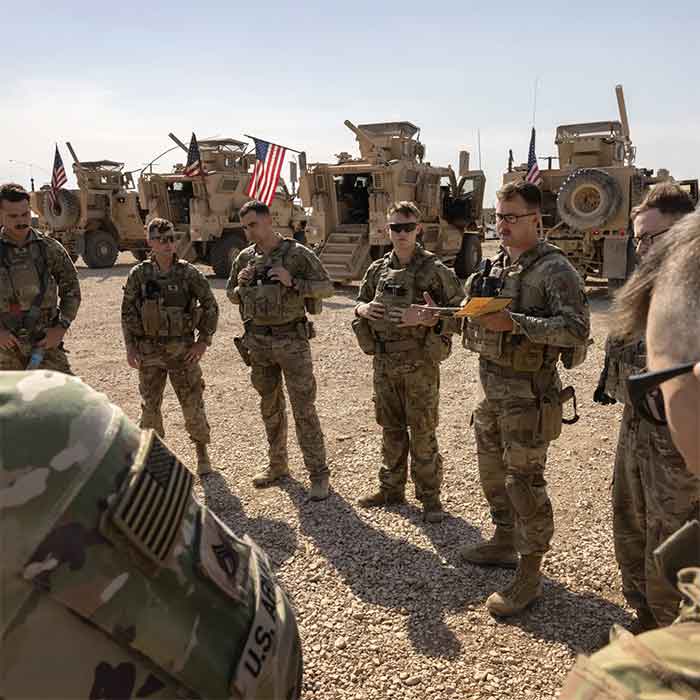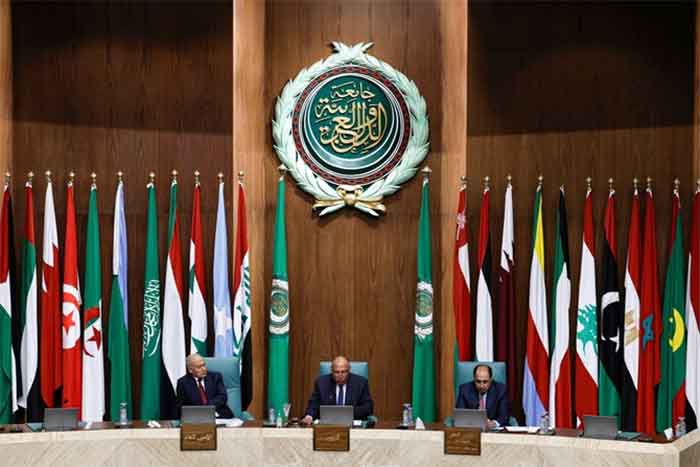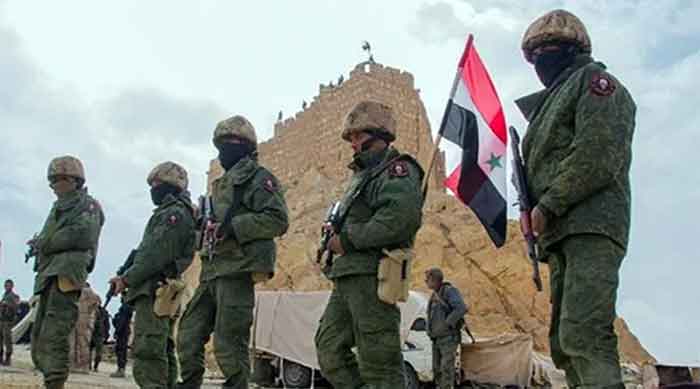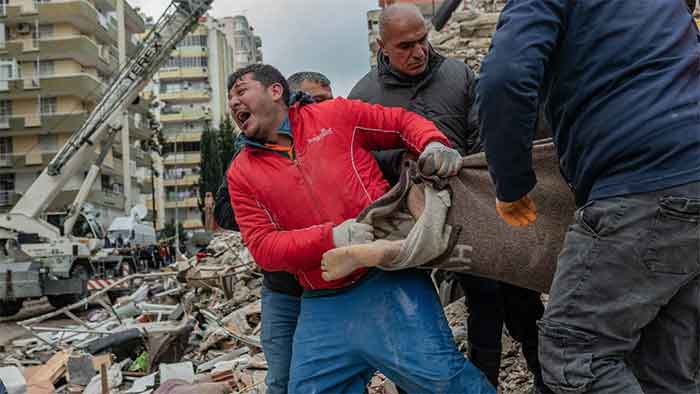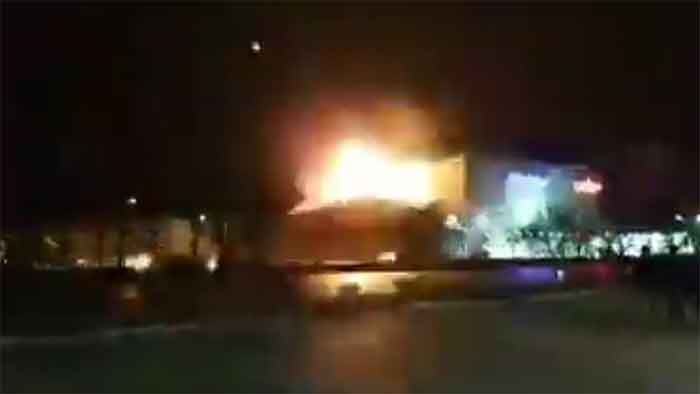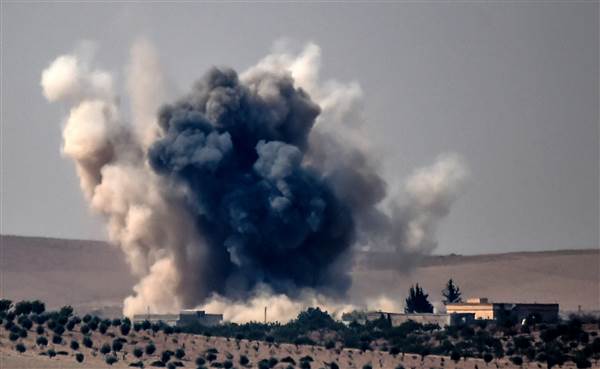
Last month, the Islamic State recaptured Palmyra from where it was evicted by the Syrian army only in March; and this week, the Islamic State has launched a fierce assault in the eastern city of Deir Ezzor, near Syria’s border with Iraq, and has successfully managed to surround the military airport, thus cutting off food supplies to the besieged city.
Although the Syria experts of the mainstream media are claiming that the Islamic State’s jihadists from the Anbar province of Iraq have crossed over from the border to reinforce the militants in Palmyra and Deir Ezzor, but we should keep in mind that Ramadi was liberated in December 2015 and Fallujah in June last year. Why did it take the Islamic State’s jihadists several months to recapture Palmyra and mount an assault in Deir Ezzor when the aforementioned cities in eastern Syria are located only a few hours’ drive from Anbar in Iraq across a highly porous border?
The Russian defense ministry, by contrast, has given the explanation that thousands of Islamic State jihadists have crossed over to eastern provinces of Syria from Mosul in Iraq; and several analysts have blamed the US for not doing enough to prevent the reinforcements reaching to eastern Syria from Iraq, because the preference of the US seems to be to drive out jihadists from Iraq but letting them give a hard time to the government troops in Syria.
The Syrian civil war is actually a three-way conflict between the Sunni Arab militants, the Shi’a Arab regime and the Syrian Kurds. And the net beneficiaries of this conflict have only been the Syrian Kurds who have expanded their area of control by cleverly aligning themselves first with the Syrian regime against the Sunni Arab militants since the beginning of the Syrian civil war in August 2011 to August 2014 when the US declared a war against one faction of the Sunni Arab militants, i.e. the Islamic State, after the latter overran Mosul in June 2014; and then the Syrian Kurds aligned themselves with the US against the Islamic State, thus further buttressing their position against the Sunni Arab militants as well as the Syrian regime.
Although the Sunni Arab militants have also scored numerous victories in their battle against the Shi’a regime, but their battlefield victories have mostly been ephemeral. They have already been evicted from Ramadi and Fallujah in Iraq and their withdrawal from Mosul, against the Iraqi armed forces with American air and logistical support, is only a matter of time.
In Syria, the Sunni Arab militants have already been routed from east Aleppo by the Syrian government troops with Russian air support. Although a faction of Syrian opposition, the Islamic State, is still occupying Raqqa and Palmyra in eastern Syria, but it’s obvious that the Islamic State is going to lose Raqqa to the Syrian Kurds and Palmyra to the Syrian government troops sooner or later.
The only permanent gains of the Sunni Arab militants would be Idlib in western Syria, Daraa and Quneitra in southern Syria; and a few areas in northwestern Syria, like al-Bab, which might change hands from the Islamic State to the relatively moderate factions of the Sunni Arab militants through Turkish arbitration.
Notwithstanding, the only difference between the Soviet-Afghan jihad that spawned the Islamic jihadists like the Taliban and al Qaeda for the first time in history, and the Libyan and Syrian civil wars, 2011-onward, is that the Afghan jihad was an overt jihad; back then the Western political establishments and their mouthpiece, the mainstream media, used to openly brag that the CIA provides all those AK-47s, RPGs and stingers to the Pakistani intelligence agencies, which then distributes those deadly weapons among the Afghan mujahideen (freedom fighters) to combat the Soviet troops in Afghanistan.
After the 9/11 tragedy, however, the Western political establishments and corporate media have become a lot more circumspect, therefore this time around, they have waged covert jihads against the Arab-nationalist Gaddafi regime in Libya and the anti-Zionist Assad regime in Syria, in which the Islamic jihadists have been sold as “moderate rebels,” with secular and nationalist ambitions, to the Western audience.
Since the regime change objective in those hapless countries went against the mainstream narrative of ostensibly fighting a war against terror, therefore the Western political establishments and the mainstream media are now trying to muddle the reality by offering color-coded schemes to identify myriads of militant and terrorist outfits that are operating in those countries: such as, the red militants of the Islamic State, which the Western powers want to eliminate; the yellow Islamic jihadists, like Jaysh al-Islam and Ahrar al-Sham, with whom the Western powers can collaborate under desperate circumstances; and the green militants of the Free Syria Army (FSA) and a few other inconsequential outfits, which together comprise the so-called “moderate” Syrian opposition.
If we were to draw parallels between the Soviet-Afghan jihad of the ‘80s and the Syrian civil war of today, the Western powers used the training camps located in the Af-Pak border regions to train and arm the Afghan mujahideen against the Soviet troops in Afghanistan with the help of Pakistan’s intelligence agencies.
Similarly, the training camps located in the border regions of Turkey and Jordan are being used to provide money, training and arms to the Syrian militants to battle the Syrian regime with the support of Turkish, Jordanian and Saudi intelligence agencies.
During the Afghan jihad, it is a known historical fact, that the bulk of the so-called “freedom fighters” was comprised of Pashtun Islamic jihadists, such as the factions of Jalaluddin Haqqani, Gulbuddin Hekmatyar, Abdul Rab Rasul Sayyaf and scores of others, some of which later coalesced together to form the Taliban movement.
Similarly, in Syria, the bulk of the so-called “moderate opposition” is comprised of Islamic jihadists, like the Islamic State, al-Nusra Front, Jaysh al-Islam, Ahrar al-Sham and myriads of other militant groups, including a small portion of defected Syrian soldiers that goes by the name of the Free Syria Army (FSA.)
Moreover, apart from Pashtun Islamic jihadists, the various factions of the Northern Alliance of Tajiks and Uzbeks constituted the relatively “moderate” segment of the Afghan rebellion, though those “moderate” warlords, like Ahmad Shah Massoud and Abul Rashid Dostum, were more ethnic and tribal in their character than secular or nationalist, as such.
Similarly, the Kurds of the so-called Syrian Democratic Forces can be compared with the Northern Alliance of Afghanistan. The socialist PYD/YPG Kurds of Syria, however, had been allied with the Shi’a regime against the Sunni Arab jihadists for the first three years of the Syrian civil war, i.e. from August 2011 to August 2014, as I have already mentioned.
At the behest of the American stooge in Iraqi Kurdistan, Massoud Barzani, the Syrian Kurds have switched sides in the last couple of years after the United States’ policy reversal and declaration of war against one faction of the Syrian opposition, the Islamic State, when the latter overstepped its mandate in Syria and overran Mosul and Anbar in Iraq in June 2014.
However, the reports of infiltration of the Islamic State’s jihadists from Iraq into eastern Syria by the Russian defense ministry sources lend credence to the suspicion that although the US seems sincere in driving out jihadists from Iraq, but it is still playing the double game of using the Sunni Arab militants to weaken the Syrian regime.
Nauman Sadiq is an Islamabad-based attorney, columnist and geopolitical analyst focused on the politics of Af-Pak and MENA regions, neocolonialism and Petroimperialism.

